|
Return
to 2012 Comprehensive Plan
What
is
the Comprehensive Plan?
How
the Plan was
Developed
Implementation
Ten
Things You Can Do!
Dashboard
Downloads
(pdf)
How
are We Doing?
Treatment
Cascade
Links
to Other Initiatives and Plans
|
|
|
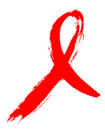
|
Houston Area Comprehensive
HIV Prevention and Care Services Plan
for 2012 through 2014
Capturing
the community’s vision for an ideal system of HIV
prevention and care for the Houston Area |
TREATMENT
CASCADE
What
is the Treatment Cascade?
In
July 2012, the Centers for Disease Control and Prevention (CDC) released an
analysis of the number and percentage of people in the United States at each
stage of the HIV care continuum. The continuum represents the sequential
stages of HIV care, from being diagnosed with HIV to suppressing the HIV
virus through treatment. Viral suppression, the last stage of the continuum,
keeps HIV at a level that helps individuals stay healthy and reduces the
risk of transmitting the virus to others.
Today,
this analysis is commonly referred to as the HIV Treatment Cascade or the
HIV Care Continuum, and it is used to measure the extent to which
communities are achieving national goals related to HIV awareness, linkage
to medical care, and viral load suppression.
The
most current national Treatment Cascade was released in July 2013 as part of
a new White House initiative.
The
Houston EMA Treatment Cascade
Applying
the Treatment Cascade model to the Houston EMA, areas of success and
continued challenge become clear.
-
Currently,
82% of HIV-infected people in the Houston EMA are aware of their infection,
and, of those aware, 73% were in HIV medical care in the past year, and
51% were
retained in HIV care within that year. In addition, 46% status
aware PLWHA in the EMA
have a suppressed viral load.
-
Compared to the national cascade,
the
proportion of persons aware of their infection in the Houston EMA is the
same as nationwide, but all other stages of the cascade are higher
in the Houston EMA than for the nation as a whole.
OVERALL
EMA: Number
and Percentage of People
with HIV in Selected Stages
of the
Continuum of HIV Care, 2012
(Version 2, as of 12-17-13)
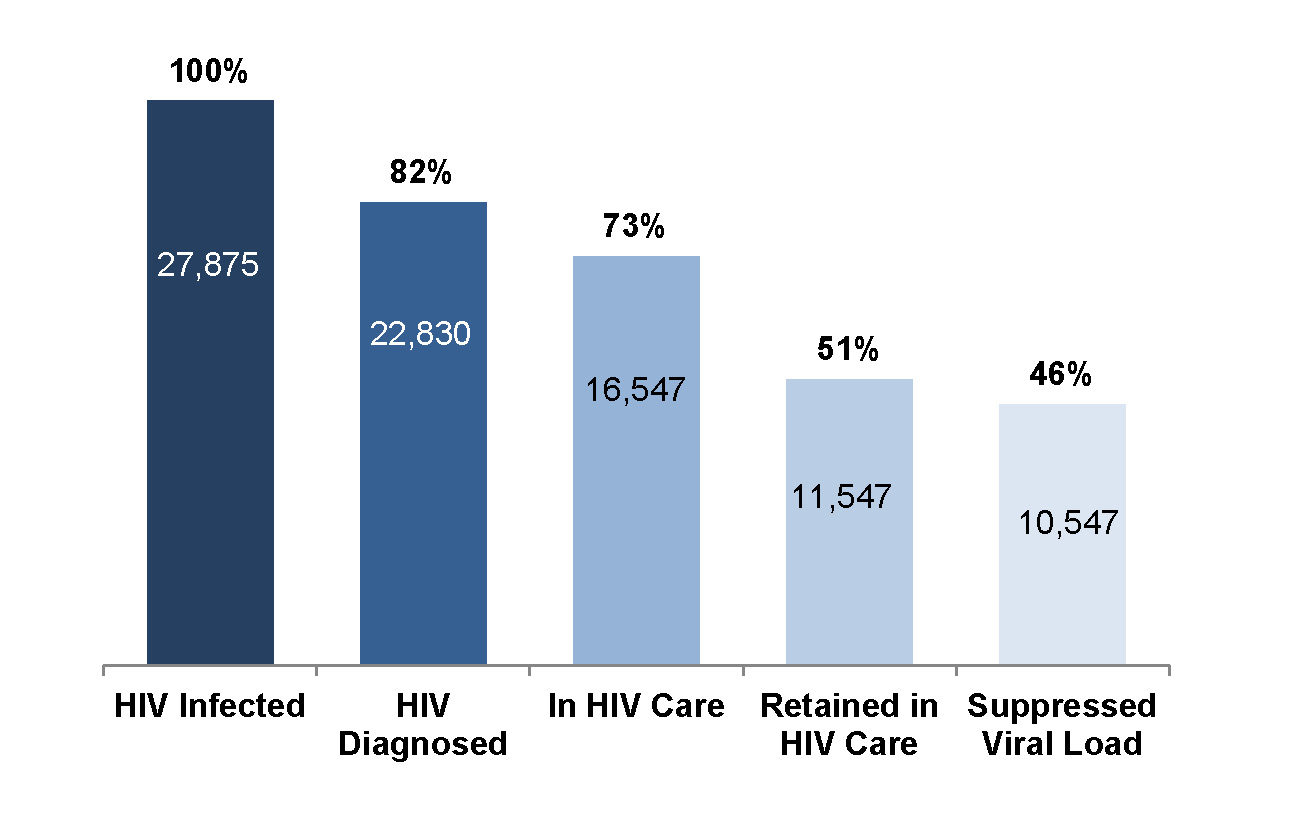
Click
here
for the methodology used to develop the Houston EMA Treatment Cascade.
The Houston EMA
Treatment Cascade, by Race/Ethnicity
When
Treatment Cascades are created for each major racial/ethnic group in the
Houston EMA, differences can be observed. For example:
-
Whites
have higher levels of engagement in every stage of the cascade than the
EMA as a whole. They also have higher percentages of those in HIV
care in the past year and those with viral load suppression than other
racial/ethnic groups.
-
African
Americans have lower percentages of people in HIV care, retained in HIV
care, and with viral load suppression than the EMA as a whole. When
compared to other racial/ethnic groups in the EMA, they also have the
lowest proportions of retention in HIV care and viral load suppression
(in fact, the lowest of all racial/ethnic, age, or risk groups).
-
Hispanics
have the lowest percentage of those in HIV care in the past year in the
EMA (in fact, the lowest of all racial/ethnic, age, or risk groups).
However, they have the highest proportion of those retained in HIV care,
and their viral load suppression is higher than the EMA as a whole.
National
Treatment Cascades by race/ethnicity are also available. Click here.
By
Race/Ethnicity:
Percent of People
with HIV
in Selected Stages
of
the Continuum of HIV Care, 2012
(Version 2, as of 12-17-13) 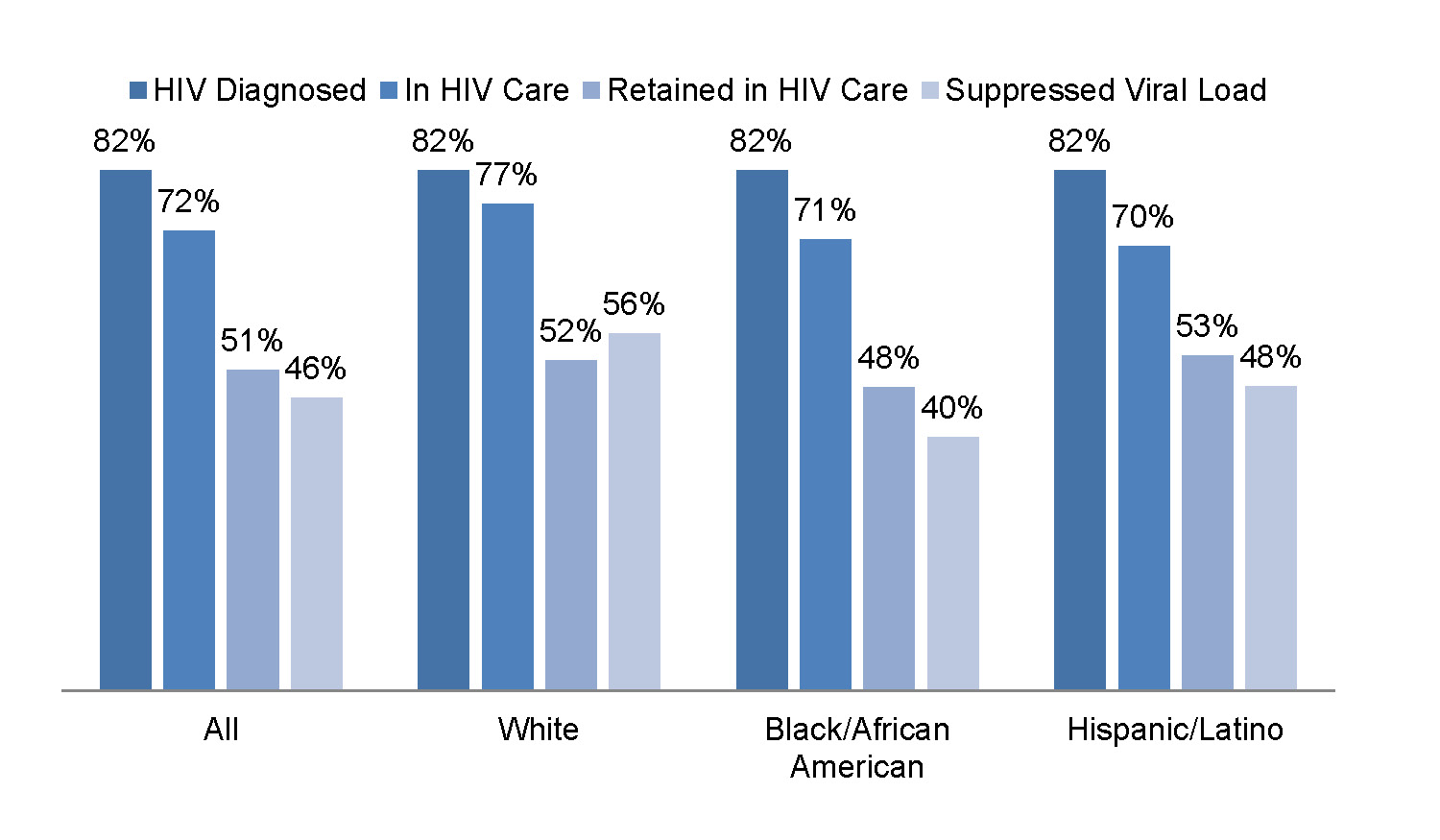
Click
here
for the methodology used to develop the Houston EMA Treatment Cascade.
The Houston EMA Treatment
Cascade, by Age
When
Treatment Cascades are created by age in the Houston EMA, additional
differences can be observed. For example:
-
The
percentage of those in
HIV care in the past year is the highest for middle age adults (35 to
49). However, retention in
HIV care and viral load suppression are highest among the slightly older
age group (age 50 to 64).
-
Being
in HIV care in the past year and being retained in HIV care are both
lowest among seniors (age 65+), while having a suppressed viral load is
lowest among youth (age
13 to 24). Only African Americans have a lower proportion of viral
suppression in the EMA.
-
In
general, engagement in the care continuum in the EMA starts low among youth,
peaks among middle age adults, and falls again among those who are 65+.
National
Treatment Cascades by age are also available. Click here.
BY
AGE: Percent of People with HIV in Selected Stages
of the Continuum of HIV Care, 2012
(Version 1, as of 12-17-13)
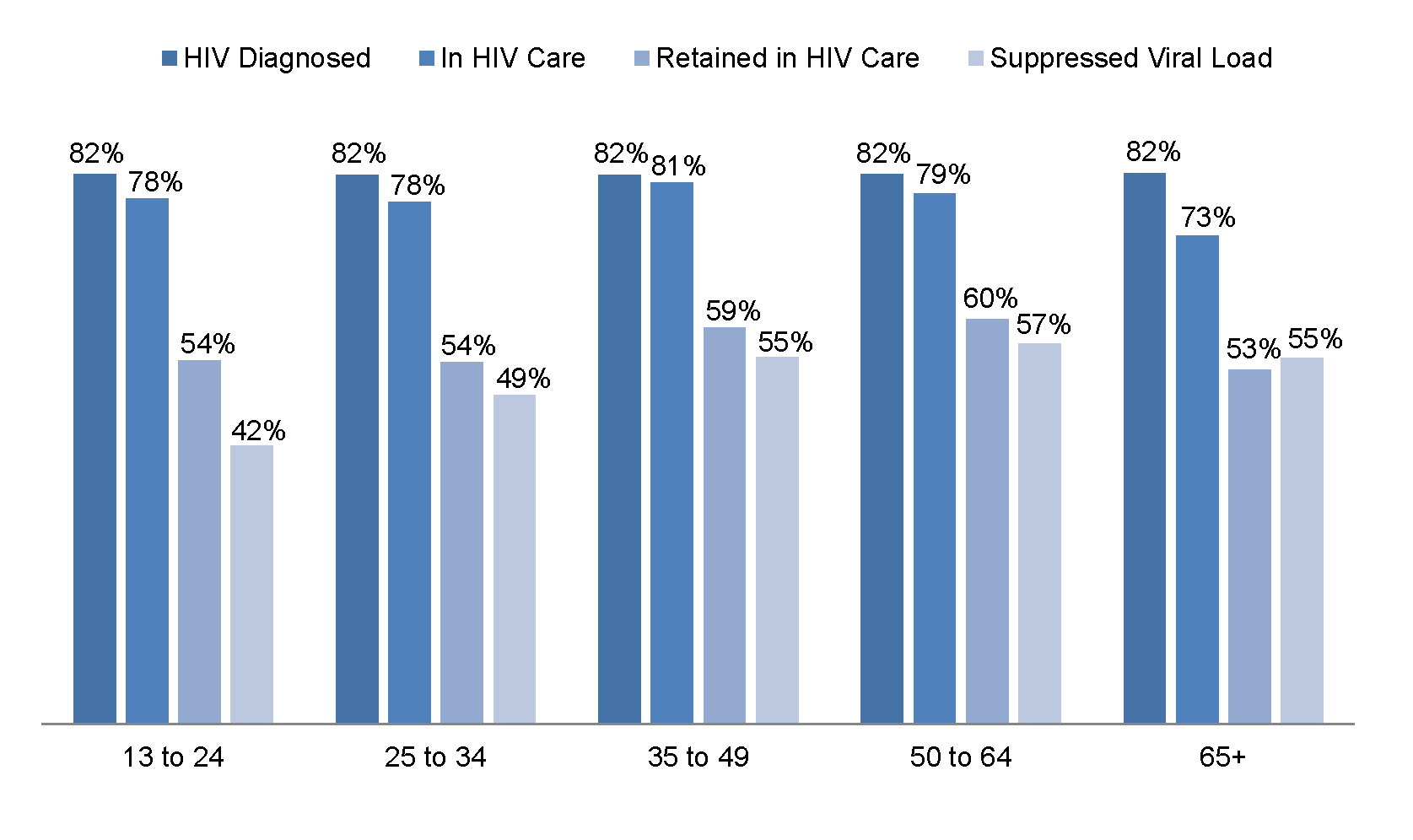
Click
here
for the methodology used to develop the Houston EMA Treatment Cascade.
The Houston
EMA Treatment Cascade, by Risk Group
When
Treatment Cascades are created by risk group in the Houston EMA, additional
differences can be observed. For example:
-
In
general, being in HIV medical care in the past year is comparable across
the three major risk groups.
-
Of
the three groups, MSM have the lowest percentage of those retained in
HIV care within the year. Only African Americans have a lower proportion
of retention in HIV care in the EMA.
-
Of
the three groups, IDU have the lowest percentage of those with viral
load suppression, which is comparable to youth PLWHA (age 13 to 24).
Only African Americans have a lower proportion of viral suppression in
the EMA
National
Treatment Cascades by risk group are also available. Click here.
BY RISK GROUP: Percent of People with HIV in Selected
Stages
of the Continuum of HIV Care, 2012
(Version
1, as of 12-17-13)
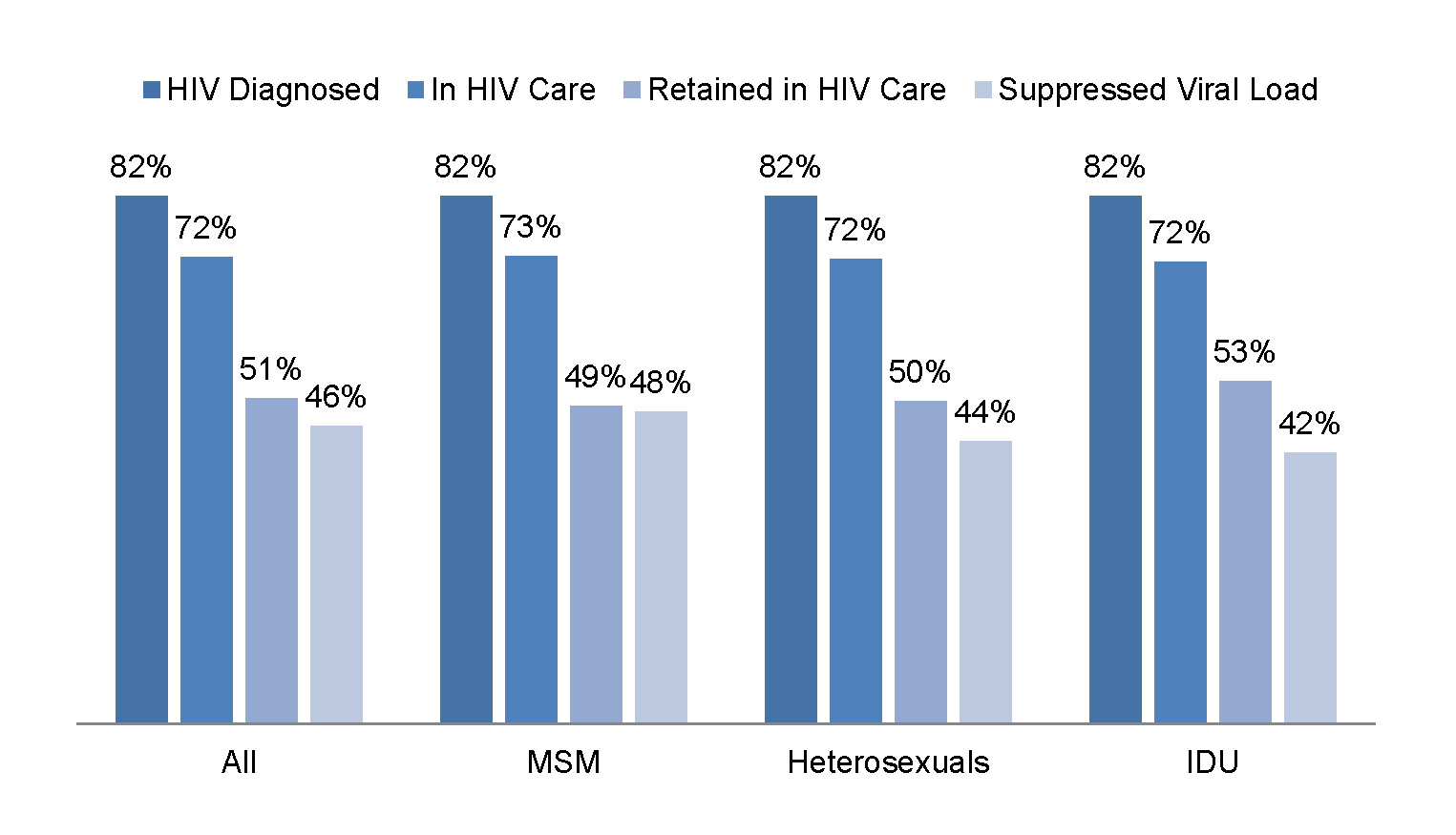
Click
here
for the methodology used to develop the Houston EMA Treatment Cascade.
Please
visit this page again for additional analyses.
Questions
about the Houston EMA Treatment Cascade can be directed to: Jen
Hadayia, Health Planner in the
Office of Support.
|




